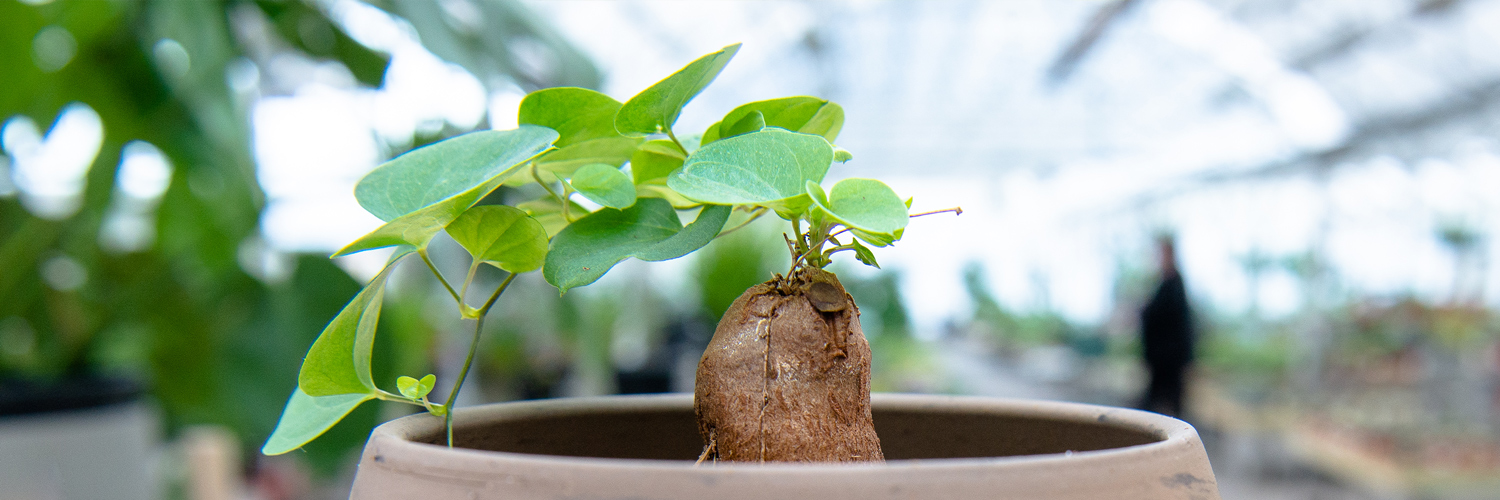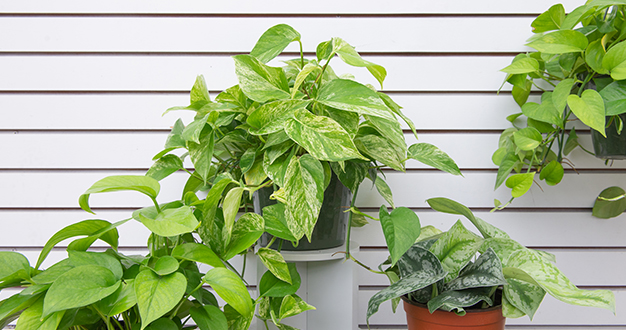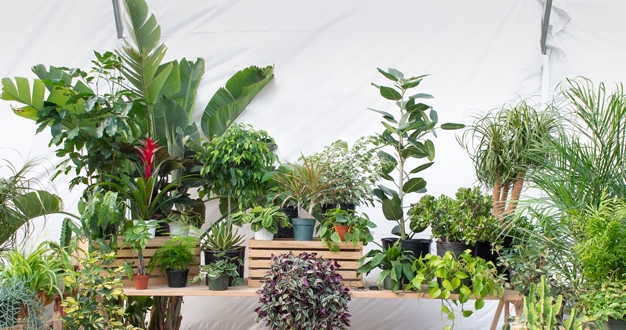
Just when you think you’ve got the whole plant parent thing figured out, along comes a strange one that challenges your assumptions of how houseplants are supposed to look and act. Discorea elephantipes – elephant’s foot – is one of those plants. Elephant’s foot isn’t difficult to care for – it just has its own style and an unusual way of doing things. And we think you’re going to love it once you meet it.
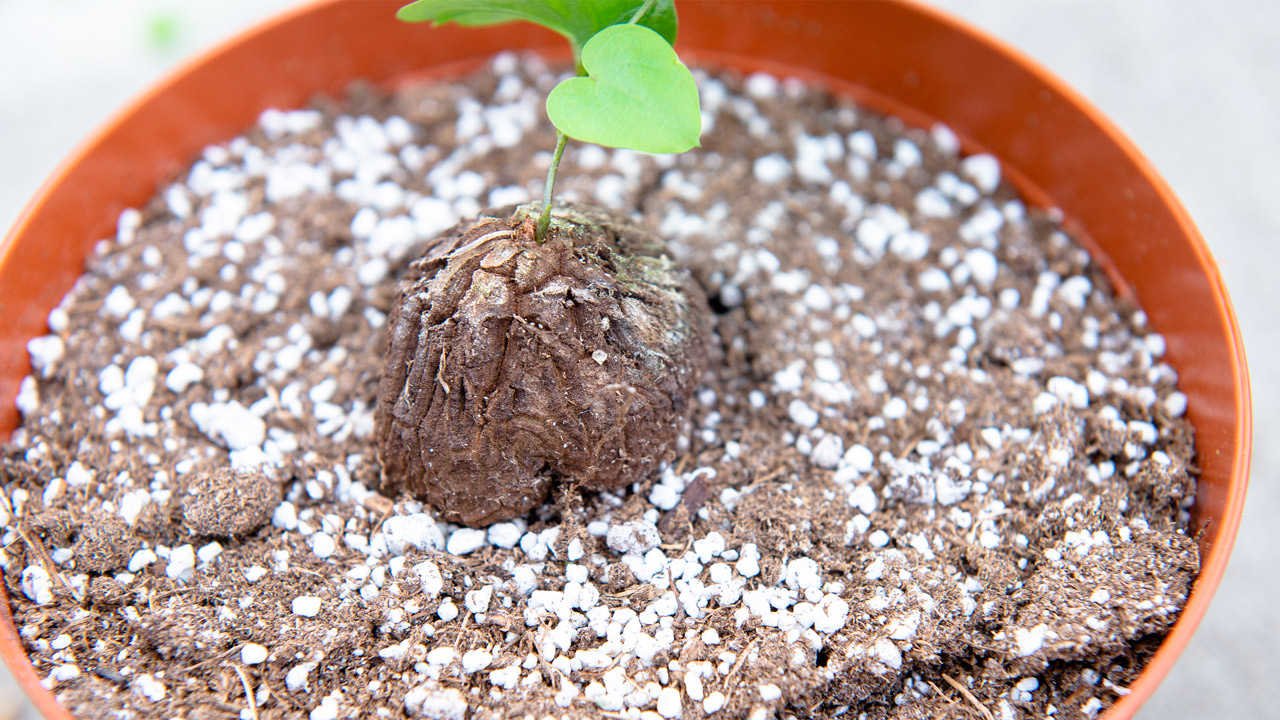
If a Turtle Sprouted a Vine…
The first thing you might notice about elephant’s foot is its caudex – an aboveground, rounded tuber covered in layers of cork-like bark and appearing like a potato, a turtle shell, or a geometric pinecone – depending on its age. Most often though, the caudex resembles an elephant’s thickly wrinkled foot – hence the common name for the plant. The caudex might look dead, but it’s very much alive. In fact, it’s an active, water-storing structure – an essential function for the plant in its native South Africa.
So elephant’s foot starts out strange and gets weirder from there. Sprouting from the top of the caudex are one to several thin, vining stems with heart-shaped leaves all along their length. While the caudex takes its time developing, the stems grow quickly and can be trained to climb up a wire trellis or drape elegantly over the side of the pot. But don’t get attached to the green part of the plant, though, because…

This Plant Takes Naps
At one or several points throughout the year, elephant’s foot decides it needs a break and goes to bed for a while. This is its dormancy period, and each plant decides for itself when it’s time to rest. Some say that due to its southern hemisphere origins, elephant’s foot goes dormant in our part of the world in the summer and grows more in the winter, but that’s not always true. For each particular plant, when dormancy happens doesn’t appear to depend on the season, the surroundings, you, or anything else. Even two plants in the same pot may go dormant at different times of the year. Every plant seems to have a mind of its own and goes by its own personal schedule.
What does dormancy look like for elephant’s foot? If you notice the vines begin to turn a bit yellow and die back, don’t panic. It’s just the plant starting to get ready for that dormant period. At this point, you can help it along by watering less and stopping fertilizer altogether. When the vines are thoroughly dry, your elephant’s foot has gone officially dormant, and it’s time to end water completely and move the plant to a cool spot. After two weeks, bring it back to its normal spot and wait for new shoots to appear – which may take a few weeks. When you see green again, resume normal water and feeding. But be patient. Overwatering won’t rouse elephant foot from its nap any faster – and will more likely lead to root rot.
More Oddness
Another unique thing about elephant’s foot is that it’s dioecious – which means its male and female flowers appear on different plants. The flowers are pale greenish-yellow and star-shaped, but they’ll look a little different depending on if you have a “boy” or a “girl” plant. And like a Christmas cactus, elephant’s foot is one of those heirloom plants that can live for decades and get passed down between generations. With the right care, this plant can live seventy years or more.
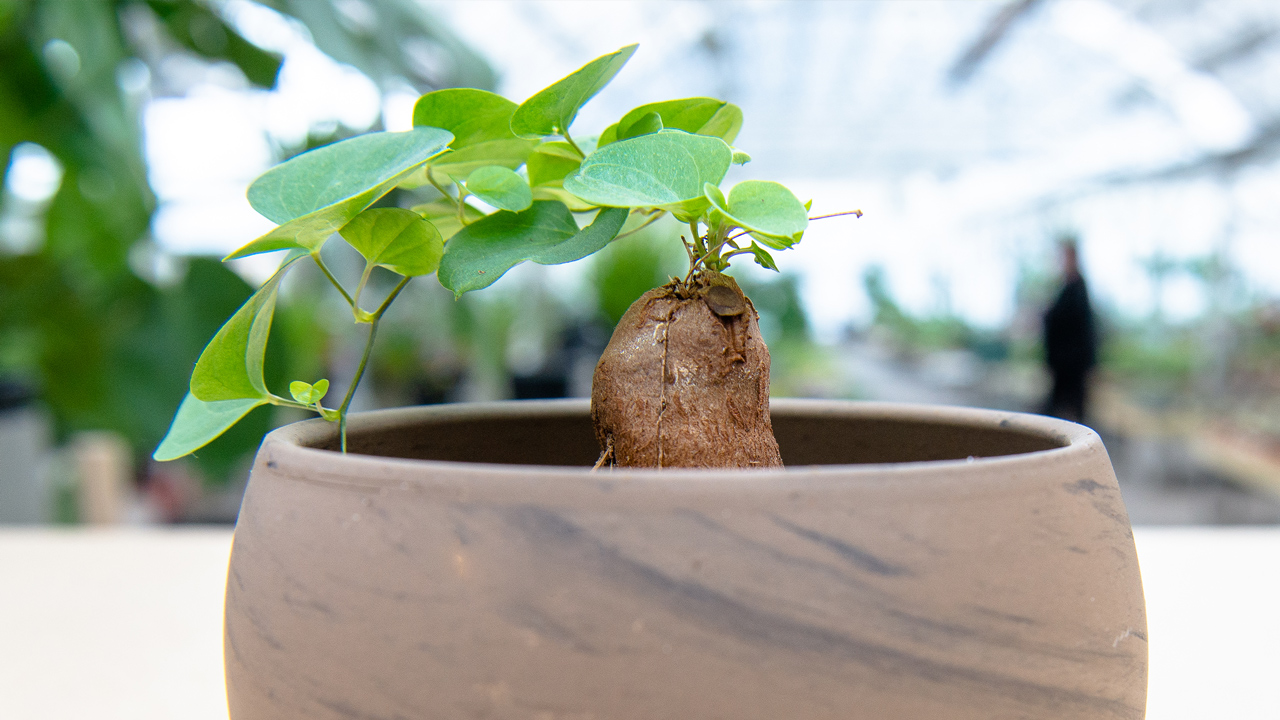
Care + Feeding
Discorea elephantipes comes from a place where it’s warm and quite dry with loose, rocky, well-draining soil. So, the more closely we can mimic those conditions here in the northern hemisphere, the happier your elephant’s foot will be.
For light, keep your elephant’s foot where it receives a lot of bright, but not necessarily direct light. If you can find a spot where the caudex stays shaded and the vines have a chance to reach into brighter light, that’s perfect. For water, keep the potting mix just barely moistened – almost completely dry – when there’s foliage present. When it’s in dormancy, water even less. Overwatering is the biggest threat to your elephant’s foot, especially when it’s taking a nap. When you do water, keep the water to the outside edges of the pot – avoid watering over the top of the caudex – and make sure the excess can drain easily. Because its root system is pretty shallow, this plant is most comfortable in a shallow container – like a clay bulb pot or dish – with a well-draining, succulent-friendly potting mix. As for feeding, it’s a good idea to give elephant’s foot a balanced fertilizer at one-quarter strength about once a month – but only when there’s foliage. When the plant is dormant, stop the fertilizer so it can rest.
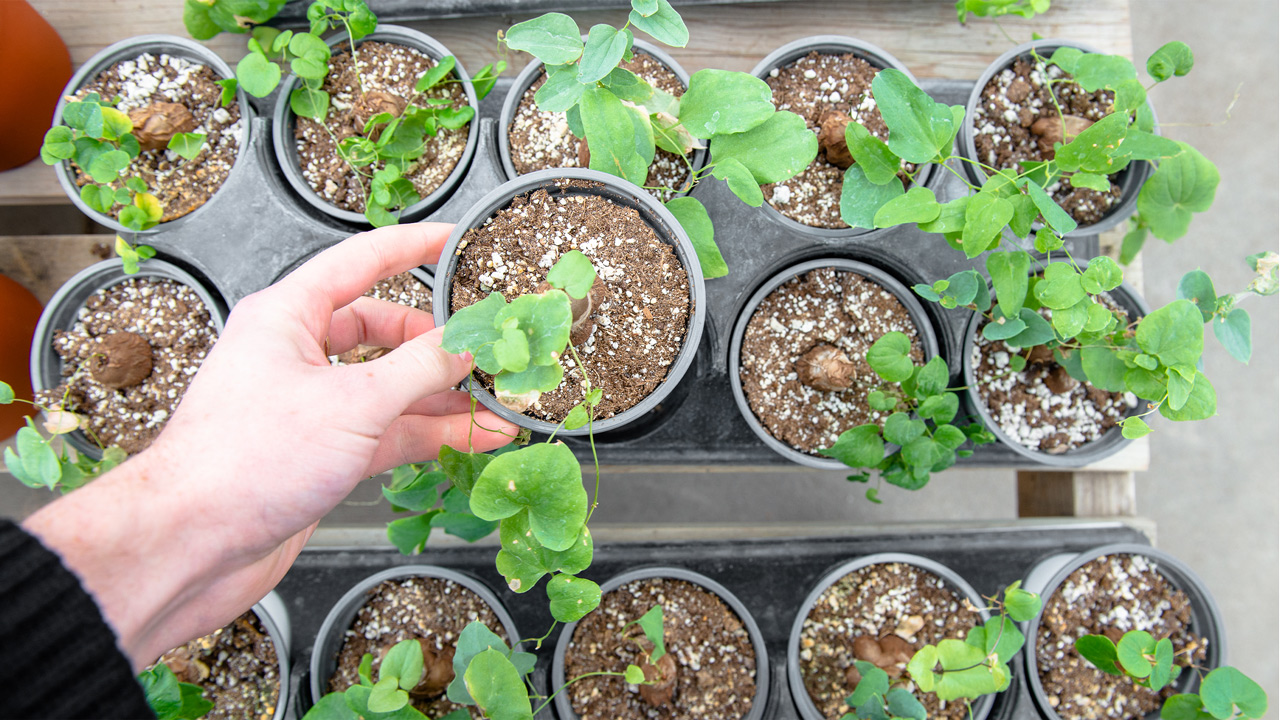
Bring Home a Strange One
Looking for a plant that’s kind of weird and hardly anyone one else has in their collection? Then we think you’ll like Discorea elephantipes. With the right care, it’ll even outlive you. And in the meantime, it’ll keep you entertained with its unusual appearance and unique approach to plant life. Come take a look – we’ve got some little ones in the Greenhouse – and we’d be happy to answer any questions you have about this amazing plant.

